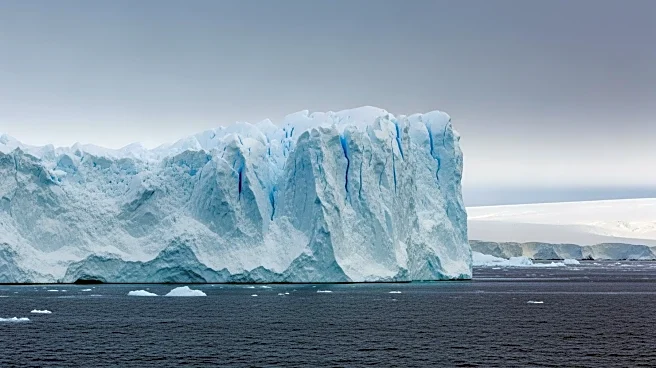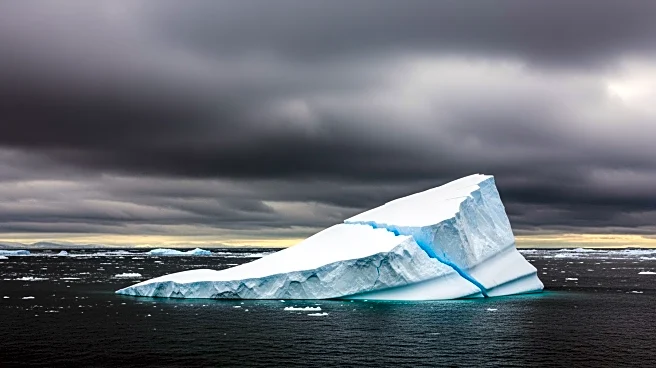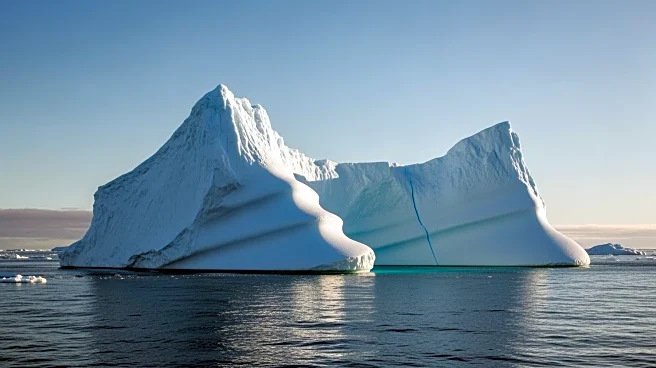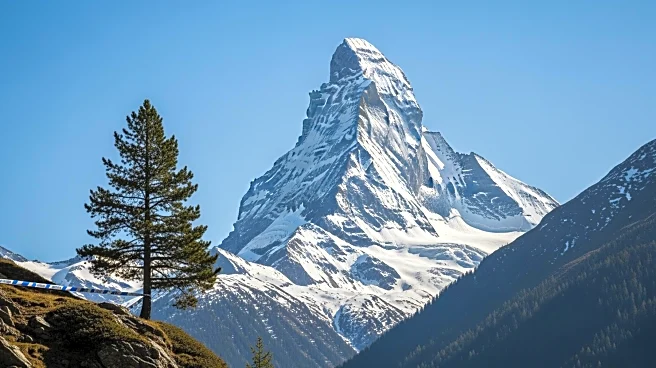What's Happening?
The Thwaites Glacier in West Antarctica, known as the 'Doomsday Glacier,' is experiencing accelerated destabilization due to progressive fracturing in its ice shelf. The Thwaites Eastern Ice Shelf (TEIS)
has been undergoing disintegration over the past two decades, as detailed in a study published in the Journal of Geophysical Research: Earth Surface. The research, part of the TARSAN project under the International Thwaites Glacier Collaboration, involved satellite imagery and ice-flow velocity measurements to trace the evolution of fractures. These fractures have led to the shelf's detachment from its pinning point, causing accelerated flow and loss of mechanical stability.
Why It's Important?
The destabilization of the Thwaites Glacier poses significant implications for global sea-level rise. As the ice shelf weakens, the potential for increased ice flow into the ocean could contribute to rising sea levels, affecting coastal communities worldwide. The study highlights a positive feedback mechanism between fracture-induced damage and ice acceleration, which could serve as a warning for other Antarctic ice shelves showing similar signs of weakening. Understanding these processes is crucial for predicting future changes in the Antarctic Ice Sheet and its impact on global sea levels.
What's Next?
The continued monitoring and research on the Thwaites Glacier are essential to anticipate further changes and potential impacts on sea-level rise. Scientists may focus on identifying other ice shelves at risk and developing strategies to mitigate the effects of ice shelf disintegration. International collaboration and investment in research could play a vital role in addressing these challenges and informing policy decisions related to climate change and coastal protection.
Beyond the Headlines
The study underscores the importance of understanding the complex interactions between ice dynamics and climate change. It raises ethical considerations regarding the responsibility of global communities to address and adapt to the consequences of rising sea levels. Long-term shifts in climate policy and international cooperation may be necessary to tackle the broader implications of Antarctic ice shelf destabilization.












